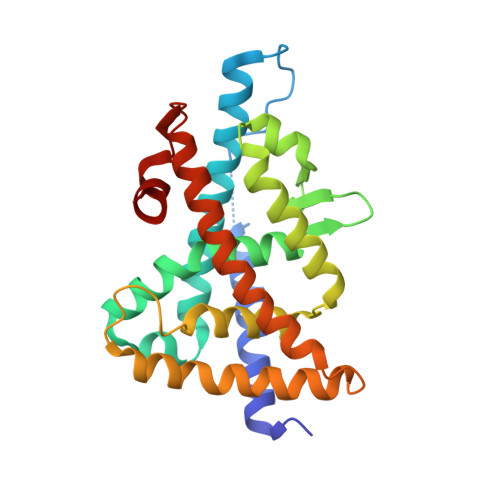Structural analysis identifies an escape route from the adverse lipogenic effects of liver X receptor ligands.
Belorusova, A.Y., Evertsson, E., Hovdal, D., Sandmark, J., Bratt, E., Maxvall, I., Schulman, I.G., Akerblad, P., Lindstedt, E.L.(2019) Commun Biol 2: 431-431
- PubMed: 31799433
- DOI: https://doi.org/10.1038/s42003-019-0675-0
- Primary Citation of Related Structures:
6S4N, 6S4T, 6S4U, 6S5K - PubMed Abstract:
Liver X receptors (LXRs) are attractive drug targets for cardiovascular disease treatment due to their role in regulating cholesterol homeostasis and immunity. The anti-atherogenic properties of LXRs have prompted development of synthetic ligands, but these cause major adverse effects-such as increased lipogenesis-which are challenging to dissect from their beneficial activities. Here we show that LXR compounds displaying diverse functional responses in animal models induce distinct receptor conformations. Combination of hydrogen/deuterium exchange mass spectrometry and multivariate analysis allowed identification of LXR regions differentially correlating with anti-atherogenic and lipogenic activities of ligands. We show that lipogenic compounds stabilize active states of LXRα and LXRβ while the anti-atherogenic expression of the cholesterol transporter ABCA1 is associated with the ligand-induced stabilization of LXRα helix 3. Our data indicates that avoiding ligand interaction with the activation helix 12 while engaging helix 3 may provide directions for development of ligands with improved therapeutic profiles.
Organizational Affiliation:
1Medicinal Chemistry, Respiratory, Inflammation and Autoimmunity, BioPharmaceuticals R&D, AstraZeneca, Gothenburg, Sweden.















